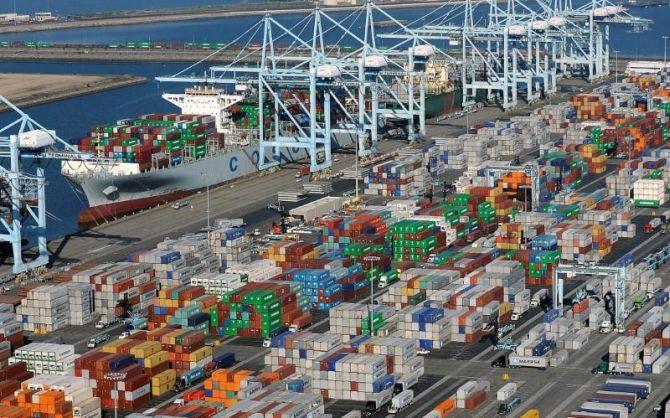Several indicators point to a loss of momentum for the global economy. In this precarious situation, it would be difficult for India to push exports, which is necessary to revive economic activity.
Abhishek Waghmare reports.

The US-China trade war is scaling new heights.
US President Donald Trump recently announced 10 per cent tariff on $300 billion worth of untaxed Chinese imports.
China responded by allowing the yuan to depreciate to its lowest against the dollar since 2008 (Chart 1).

The rupee also lost 2 per cent on August 5, its biggest one-day loss in six years.
Earnings on Wall Street have peaked and the US bond yields have slipped (Chart 2), raising an alarm that the US economy might slip into a recession.

Further, concerns over global economic growth are rising.
While China and the US would see slower growth in the coming years, India is expected to grow at a higher rate, according to the IMF (Chart 3).

Several indicators point to a loss of momentum for the global economy.
In recent years, barring 2017, trade volumes have been growing slower than projections (Chart 4).

Aside from showing volatility in short intervals, commodities prices have softened, reflecting weak demand.
The Bloomberg Commodities Index, for instance, is dipping (Chart 5).

In this precarious situation, it would be difficult for India to push exports, which is necessary to revive economic activity.
Stagnation in exports has been one of the biggest weaknesses of the Indian economy in recent years.
India's exports in FY19 have barely matched their FY14 levels in nominal terms (Chart 6).

Over this period, the rupee has remained consistently overvalued.
Also, there is looming worry of increasing current account deficit (CAD).
Despite oil being 30 per cent cheaper compared to FY14, the CAD in FY19 was at 2.1 per cent of GDP, higher than its level back then (Chart 7).













 © 2025
© 2025